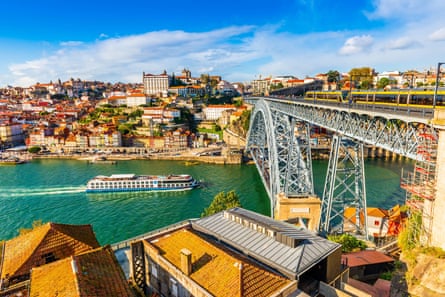Ask for a lineup of the most popular European coastal destinations and you might expect the usual suspects: Venice, Lisbon and Nice. Travellers from the era of the Grand Tour might have added Biarritz and Naples – but a survey of 3,500 readers by consumer organisation Which? suggests that visitors are starting to look beyond the old favourites and discover new destinations.
The Spanish Mediterranean port of Valencia was the surprising winner in a recent poll that looked at 12 separate criteria, including quality of the beaches, seafronts and marinas; attractiveness; food and drink; and value for money. Respondents cited the city’s history, futuristic architecture and gastronomy, but also its peace and quiet. With traditional favourites such as Barcelona struggling with overpopularity – numbers there are heading back towards the 2019 high of 13.9 million overnight visitors – that seems significant.
Which? editor Rory Boland points out some other surprising additions to the list in areas such as the Costa del Sol. “Some of the highest-rated spots like Nerja and Estepona have a more laid-back atmosphere compared to Fuengirola,” he says.
The latter came in last in the survey, while its neighbour Estepona drew praise for its carefully refurbished historic old town, which has retained its inhabitants and not become a tourist destination of wall-to-wall bars, restaurants and shops.
Also up there in the Top 30, alongside the predictable Dubrovnik, Málaga and Bilbao, are gems such as the Algarve town of Tavira, much loved for its seafood, cobbled streets and friendly atmosphere. The Sicilian city of Syracuse sneaks in at No 8, above Barcelona and Lisbon, and may expect to improve on that with Indiana Jones and the Dial of Destiny turning the spotlight on the ancient home of Archimedes.
“If you’re planning your next getaway and looking for a slice of sea and sun,” says Boland, “our survey results show that it’s well worth looking beyond the biggest-name destinations.”
Taking that advice, and going beyond the survey results, Noel Josephides, chairman of Sunvil and veteran explorer of the Mediterranean, suggests Nafplio and Thessaloniki in Greece, both historic cities. “Nafplio has got a lovely waterfront with Venetian and Turkish architecture,” he said. “Thessaloniki is lively, to say the least, a great crossroads of east and west.”
after newsletter promotion
There are many more fresh alternatives: Slovenia has Piran, a near neighbour to Trieste, with its unique Adriatic/central European heritage. Across Italy are Genoa and Livorno. Down south, Bari has a fascinating historic quarter, the Barivecchia. On the Côte d’Azur, try Menton.
As for Valencia, the city’s ambitious redevelopment has paid off: the course of the Túria River (diverted after flooding in 1957) is now a green ribbon wriggling through the city, crossed by 18 bridges and connecting the Bioparc at one end with the City of Arts and Sciences at the other. The spectacular building, designed by Santiago Calatrava and Félix Candela, boasts an aquarium, an opera house and a science museum, all adding to what is an outstanding winner of the poll.
Top 10 seaside towns and cities in Europe

Valencia, Spain
Porto, Portugal
Venice, Italy
Tavira, Portugal
Pollença, Mallorca, Spain
Chania Town, Crete, Greece
Rhodes, Greece
Syracuse, Sicily, Italy
Barcelona, Spain
Lisbon, Portugal

